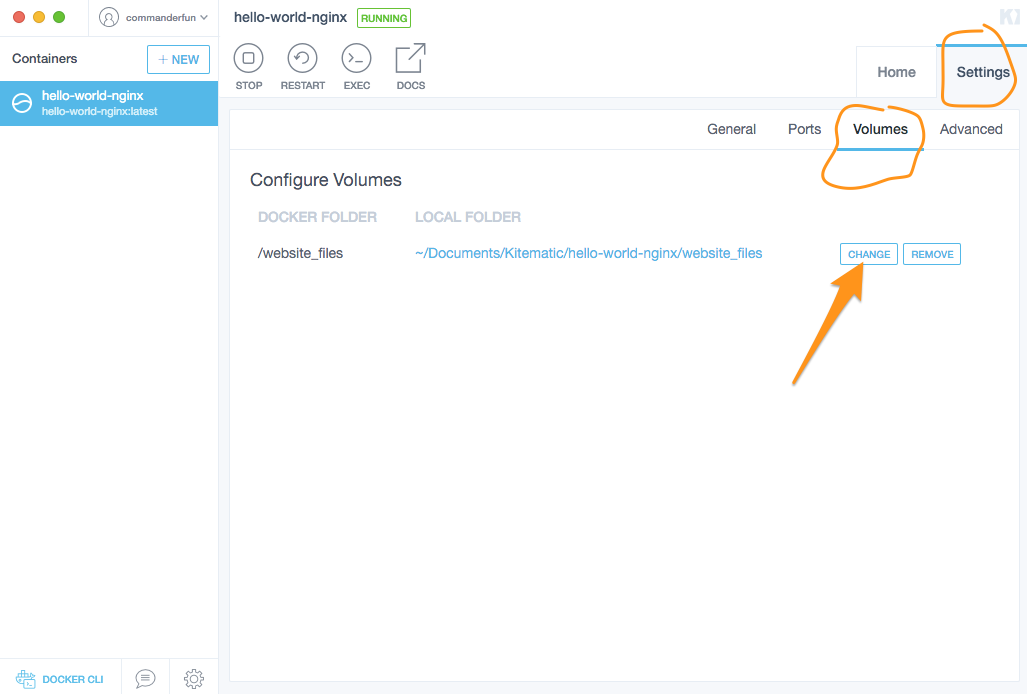고정 헤더 영역
상세 컨텐츠
본문
A recurring question on the and on the is “how can I change the network range used by Docker?”. While Docker itself doesn’t have a configuration option to change this network range (yet!), it is very easy to change it, and here is how.
Cannot Find A Docker Config File On My Machine
Let's say that we have a Docker container running on our system with a container ID e350390fd549 I would like to obtain its internal IP address. First, and recommended method is do use docker inspect command. The following linux command will print detailed information about your Docker container.
Docker’s default behavior When you (or your distro’s init scripts) start the Docker daemon, the daemon will check if it was given a -b option on the command-line. This option specifies the name of the bridge interface to be used by Docker.
Cannot Find A Docker Config File On My Mac Computer

All the containers will be bound to this bridge. If the -b option is not specified, Docker will use the name docker0 instead. Then, Docker will check if that bridge interface actually exists. If it does, it will use it – and use whatever IP address and netmask are configured on this address.
For instance, if you already have a bridge br0 setup with IP address 10.3.3.100/24, and start the Docker daemon with -b br0, then containers will be started on IP addresses from 10.3.3.1 to 10.3.3.99, then (skipping the bridge address) from 10.3.3.101 to 10.3.3.254. If the interface doesn’t exist, Docker will create it, and assign an IP address to it.
But of course, it cannot just pick a random IP address: it would always conflict with someone’s IP addressing plan out there. So Docker tries to be smart. It tries a number of different ranges, until it finds one that doesn’t overlap with an existing route on your system, or with your DNS server. (You can see the whole list in.) Hell is paved with good intentions But Docker only knows about your directly connected routes (using the ip route command) and your DNS server (checking /etc/resolv.conf). The first address that Docker tries to use is 172.17.42.1/16. Suppose that your machine’s IP address is 192.168.1.2/24, your default gateway is 192.168.1.1/24, and you happen to have an internal server on 172.17.6.6, reachable through your default gateway.
Docker won’t “see” the route to that server (it will only see the default route), and it won’t be able to “know” that it shouldn’t use that network. In other words, Docker network allocation scheme is not bullet-proof. It’s still useful, because instead of working 99% of the time, it probably works 99.99% (I’m completely making up those numbers); but the remaining 0.01% still need a solution. So what should I do? If you are in that 0.01%, the solution is very simple: just create your own bridge, configure it with a fixed address, tell Docker to use it. If you do it manually, it will look like this (on Ubuntu). Auto br0 iface br0 inet static address 10.1.1.1 netmask 255.255.255.0 bridgeports dummy0 bridgestp off bridgefd 0 My version of the ifupdown scripts require that a bridgeports option is present, otherwise, it doesn’t recognize the interface as a bridge.
Therefore, I put a dummy interface in it. Also, for bonus points, I disabled the STP protocol and reduced the forwarding delay to zero. Then, I updated my Docker init script to add -b br0. Note: I used br0 because I also have other VMs running on this machine (using QEMU, VirtualBox, and sometimes KVM) and I configured everything to use br0, so my containers and my VirtualBox VMs can communicate directly. But to make things simpler, you can just use the name docker0 in your interfaces definition file, and Docker will pick it up automatically without extra configuration.
But I don’t want to edit my system files; can’t Docker do this? But it would be reasonable to extend the -b option to specify the address and netmask to use; for instance -b br0 would still use the br0 interface “as-is”, but -b br0=192.168.1.1/24 would create the interface and assign an IP address. Docker is an Open Source project, and is really easy. If you really need that feature, it could be the perfect opportunity to learn:-) Seriously, though, if you want to implement this, don’t hesitate to (after having read the guidelines) to indicate that you will be working on it; and we’ll look forward to reviewing your pull requests!




